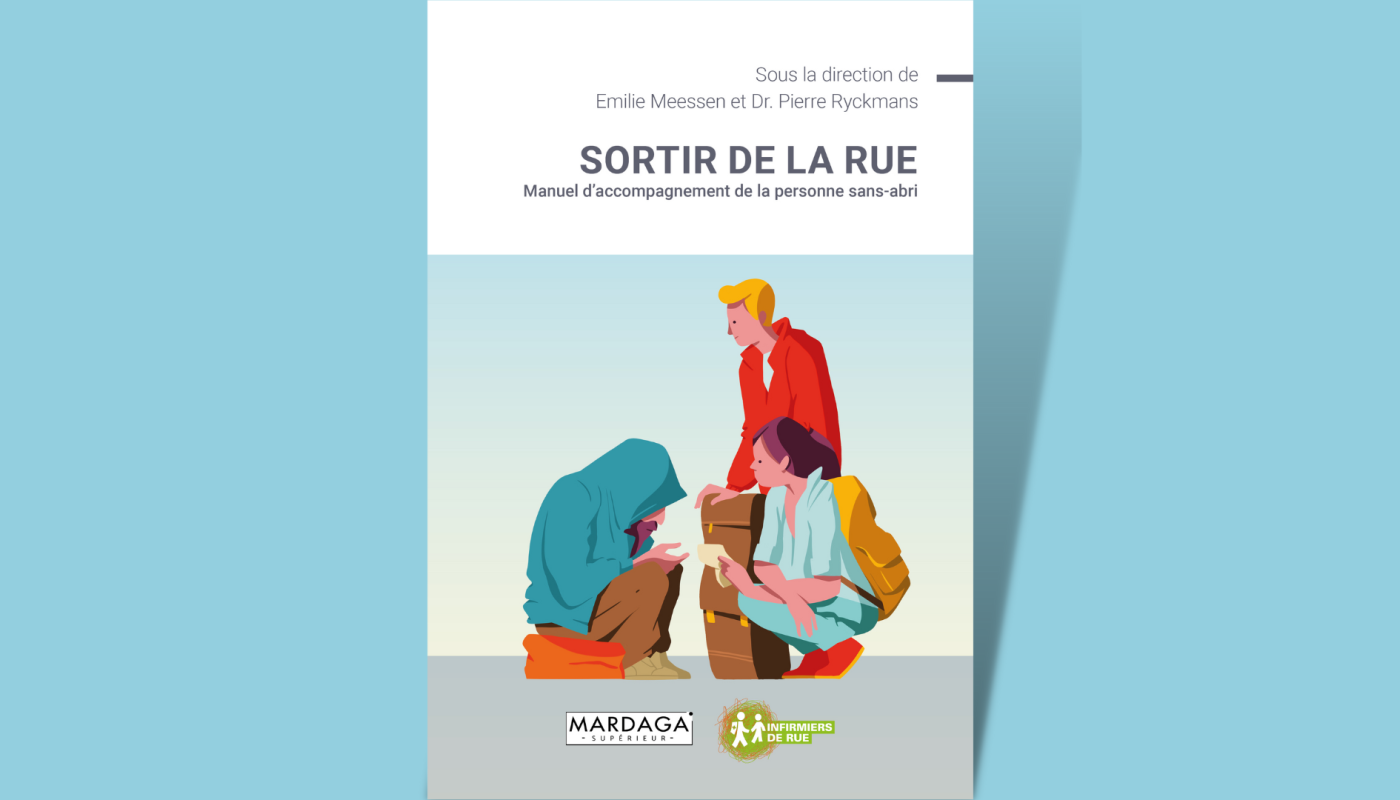At the beginning of 2023, Street Nurses is conducting a crowdfunding campaign to update and publish its handbook “Sortir de la rue » (which translates to “Leaving the street behind”). What is its purpose and why is it so important to us that it is published? Here's some insight!
Our methodology to get homeless people off the street
Emilie Meessen was a young nurse when she realised that despite the large number of medical and social associations in Brussels, there were still many homeless people. In 2005, she decided to found the non-profit Street Nurses with her friend Sara Janssens.
In 2006, they started working on the streets and developed their own methodology, based on hygiene and health. In 2011, Street Nurses adopted the Housing First approach, integrating housing as the only solution for social integration of the most vulnerable homeless people.
Sharing our expertise in ending homelessness
In 2014, we wrote and published our first handbook for nurses and street workers. Since then, we have experimented, innovated, won battles and learned from our mistakes. We have refined our methodology and adapted our practices to the needs of our patients and the current context.
And it works! We have already taken almost 200 people off the streets in total. But the number of homeless people keeps increasing, and we cannot end homelessness on our own.
This handbook is therefore intended for all employees, volunteers and citizens who are in contact with the homeless public, either occasionally or on a regular basis, as well as with people who have been rehoused after years on the streets.
Participate in the crowdfunding for the publication of our handbook
Content of the handbook
The manual to be published in 2023 will be an updated version of the manual Sortir de la rue, c’est possible published in 2015 by Street Nurses. It will contain:
- Information on people living on the street, their multiple paths and the process of de-socialisation
- Explanation of life on the street: difficulties and dangers, health and daily life, specificities, the homeless person's network, initiating change, Housing First, and anchoring work
- Presentation of tools and methodology, and the common thread of hygiene
- Ethical and professional aspects of the encounter with the homeless person
- Steps to change
- Support for fieldwork and networking
- An overview of mental health and behavioural problems, with additional information on mental disability, addictions and psychiatric pathologies
- Work on pathologies and care
- Methodological tools

